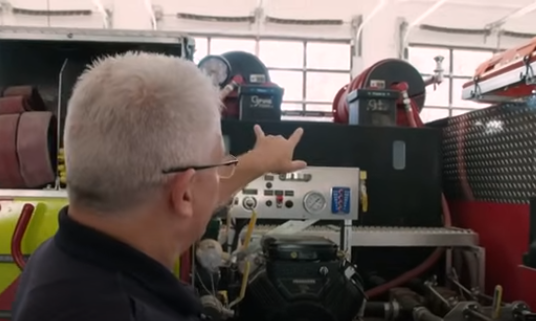Firefighters and fire departments across Washington are taking a stand against the state’s homeowner insurance rating system, which many feel is outdated and unfairly punitive, particularly in rural areas. The issue is part of an escalating insurance crisis as more homeowners report losing coverage due to wildfire risk. The King Five Investigators, in a report led by Kristen Goodwillie, reveal that fire chiefs in Washington are now working on legislation to change the decades-old system that determines insurance premiums based on fire risk.

The Problem with Washington’s Insurance Rating System
At the center of the controversy is the Washington Surveying and Rating Bureau, an organization responsible for assessing fire risk and assigning each community a fire protection rating. This rating, which ranges from one to ten, is used by insurance companies to calculate premiums and determine insurability. While an excellent rating of one means a low-risk area, a poor rating of nine or ten significantly increases the likelihood of insurance issues for homeowners. Ratings are based on several criteria, including the number of fire hydrants, water supply, and adherence to building codes—factors that heavily favor urban environments and overlook the needs and realities of rural communities.
Fire chiefs in rural areas argue that the system fails to recognize the unique challenges and strengths of smaller fire departments, particularly their capacity to respond to wildfires. According to fire officials, the system’s bias towards urban metrics, such as proximity to fire hydrants and full-time staffing, places rural areas at a disadvantage and unfairly penalizes them with higher ratings.
Fire Departments’ Achievements Go Unrecognized
The story of John Lowe, a homeowner in rural Stevens County, illustrates the problem. In 2021, when a wildfire threatened his property, Lowe stayed behind to defend his home as the fire swept over the hillside, eventually landing on his deck. His house survived, largely thanks to the quick and skilled response of the Stevens County Fire Department, which is trained to combat wildfires effectively. In fact, the department successfully fought 41 wildfires in the 2023 season without a single home lost to fire.
Despite this success, Stevens County has been assigned a fire protection rating of seven—a rating the fire department believes does not reflect its effectiveness in protecting homes from wildfire. Stevens County Fire Chief Mike Bey argues that their success rate in defending properties should influence their rating, yet the Surveying and Rating Bureau’s criteria neglect the department’s strengths in wildfire response and focus instead on urban-centered metrics.
The Push for Legislative Change
Many fire chiefs across Washington share similar frustrations. Chief Dennis Don of the Gig Harbor Fire Department, who also holds a leadership role with the Washington State Association of Fire Chiefs, is one of the advocates pushing for change. Don explains that the association is currently drafting legislation to create a more nuanced and fair system. The proposed legislation aims to establish new oversight for the Surveying and Rating Bureau, bringing about a rating system that accurately reflects the capabilities of both rural and urban fire departments.
Carl Newman, the President and CEO of the Surveying and Rating Bureau, has responded to criticisms by stating that insurance companies are not currently requesting that wildfire-fighting abilities be included in their assessments. According to Newman, the bureau is primarily funded by the insurance industry, which dictates the data criteria. Although the bureau has received some calls from fire chiefs advocating for more comprehensive wildfire information, it ultimately caters to the insurance companies’ demands.
Rising Insurance Premiums Affecting Homeowners
Meanwhile, homeowners in rural areas are feeling the effects of the rating system through rising insurance premiums. For instance, Fox Island near Gig Harbor, surrounded by water, was recently given a poor fire rating of nine after its fire department shifted from a volunteer system to part-time staffing. Doug Nelson, a former volunteer firefighter and a Fox Island resident, saw his insurance premium increase by 30 percent due to the higher rating, despite the fact that response times remained the same, if not better. Living on a fixed income, Nelson faces significant financial strain due to the higher premiums, which he links to the heightened fire risk that insurers perceive in the region.
Homeowners like Nelson, along with rural fire departments, argue that the rating system is outdated and fails to capture the realities of modern firefighting. Many feel that the system not only burdens homeowners with unnecessary insurance costs but also undermines the work and success of fire departments in defending properties from wildfires.
Looking Ahead: A Fairer Rating System on the Horizon
As fire chiefs work towards creating legislation to revamp the rating system, there is hope that a fairer, more accurate assessment method will soon be in place. According to Chief Bey of the Stevens County Fire Department, greater awareness among Washington residents could build momentum for the proposed changes and increase the chances of passing the legislation in the upcoming session.
Fire officials and advocates emphasize that a more equitable rating system is essential for protecting both homeowners and fire departments. By recognizing the full range of fire-fighting capabilities, including rural departments’ wildfire response expertise, Washington’s insurance system could become more balanced and responsive to the unique needs of diverse communities across the state.

















